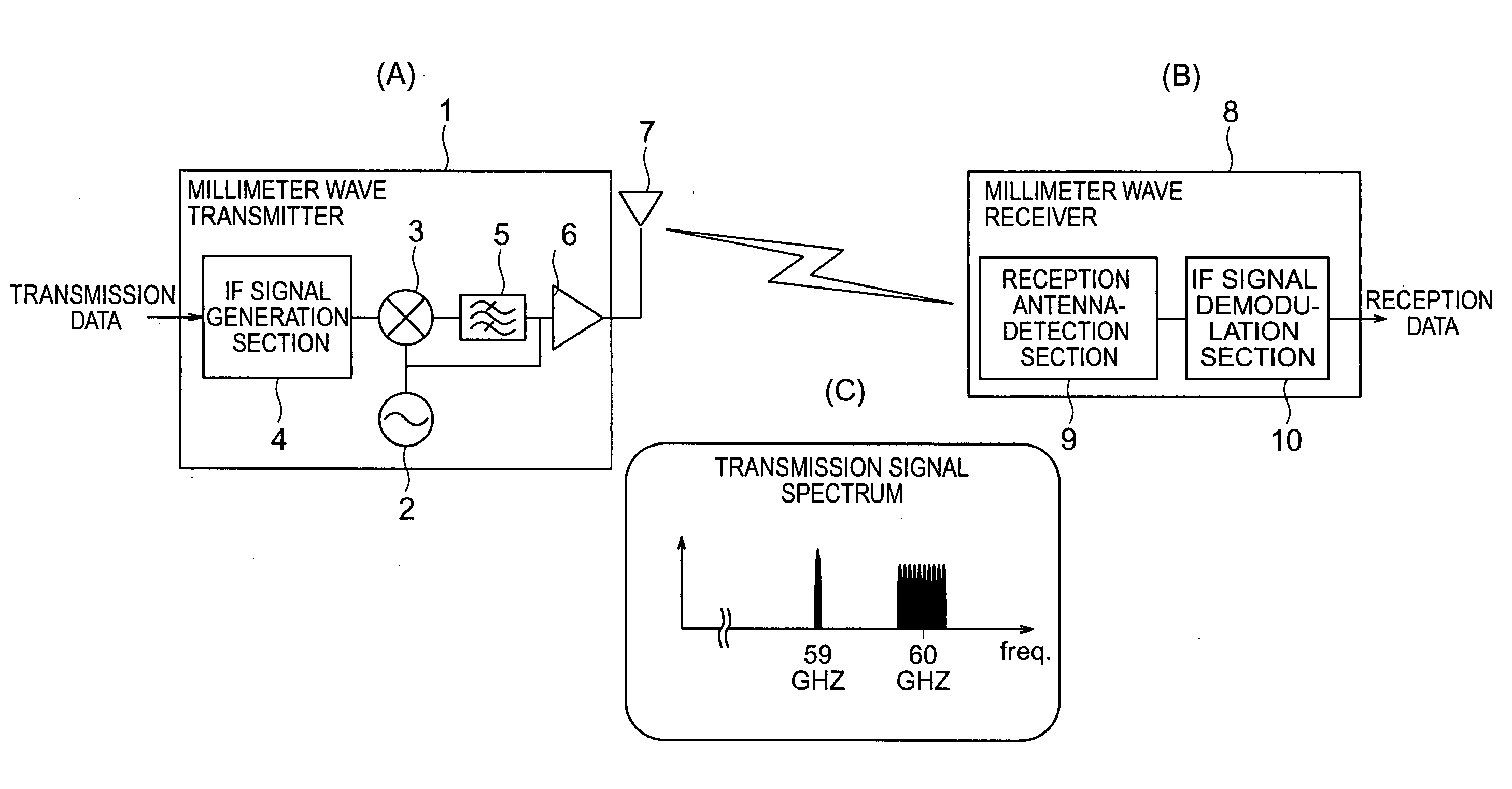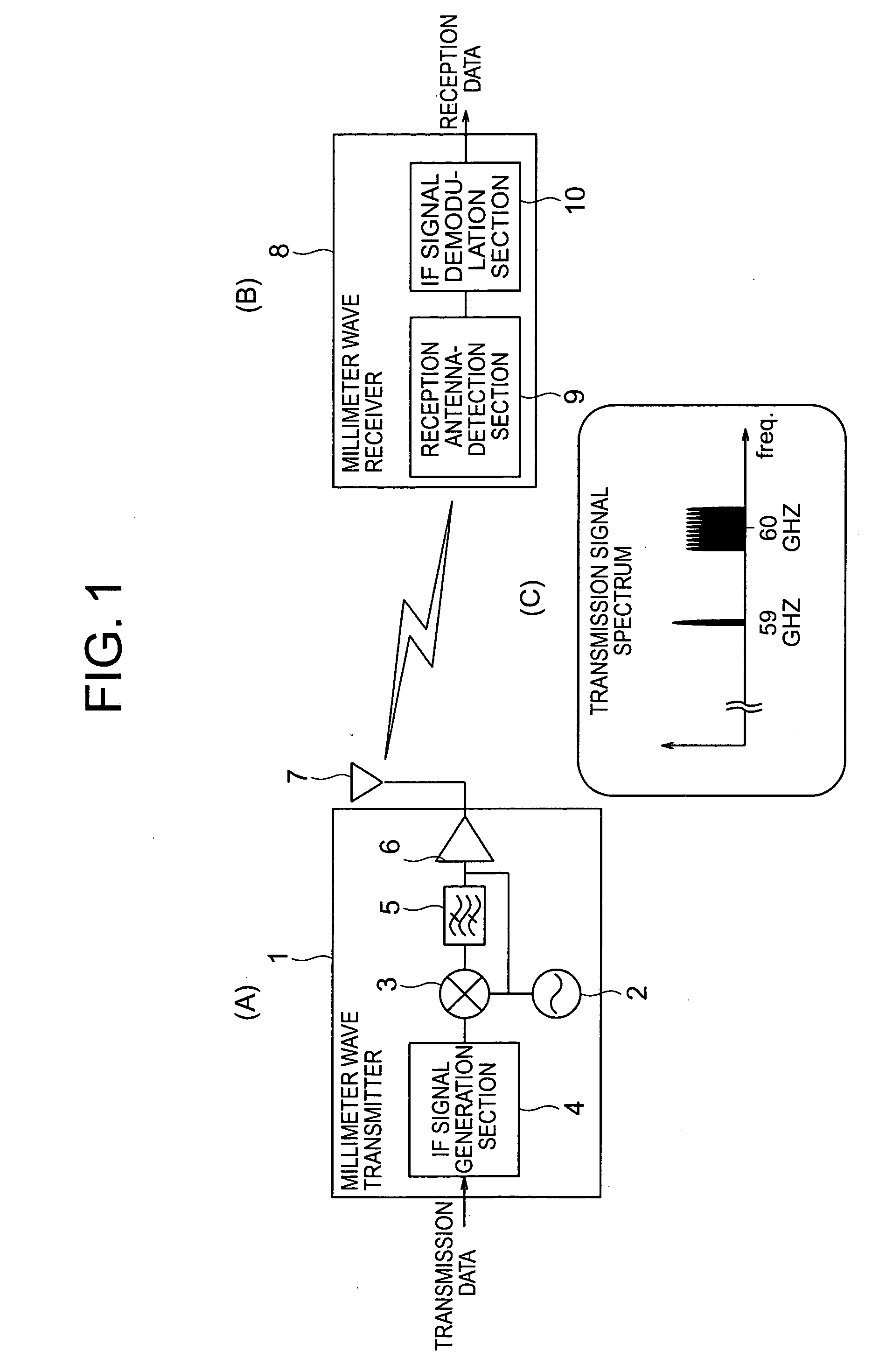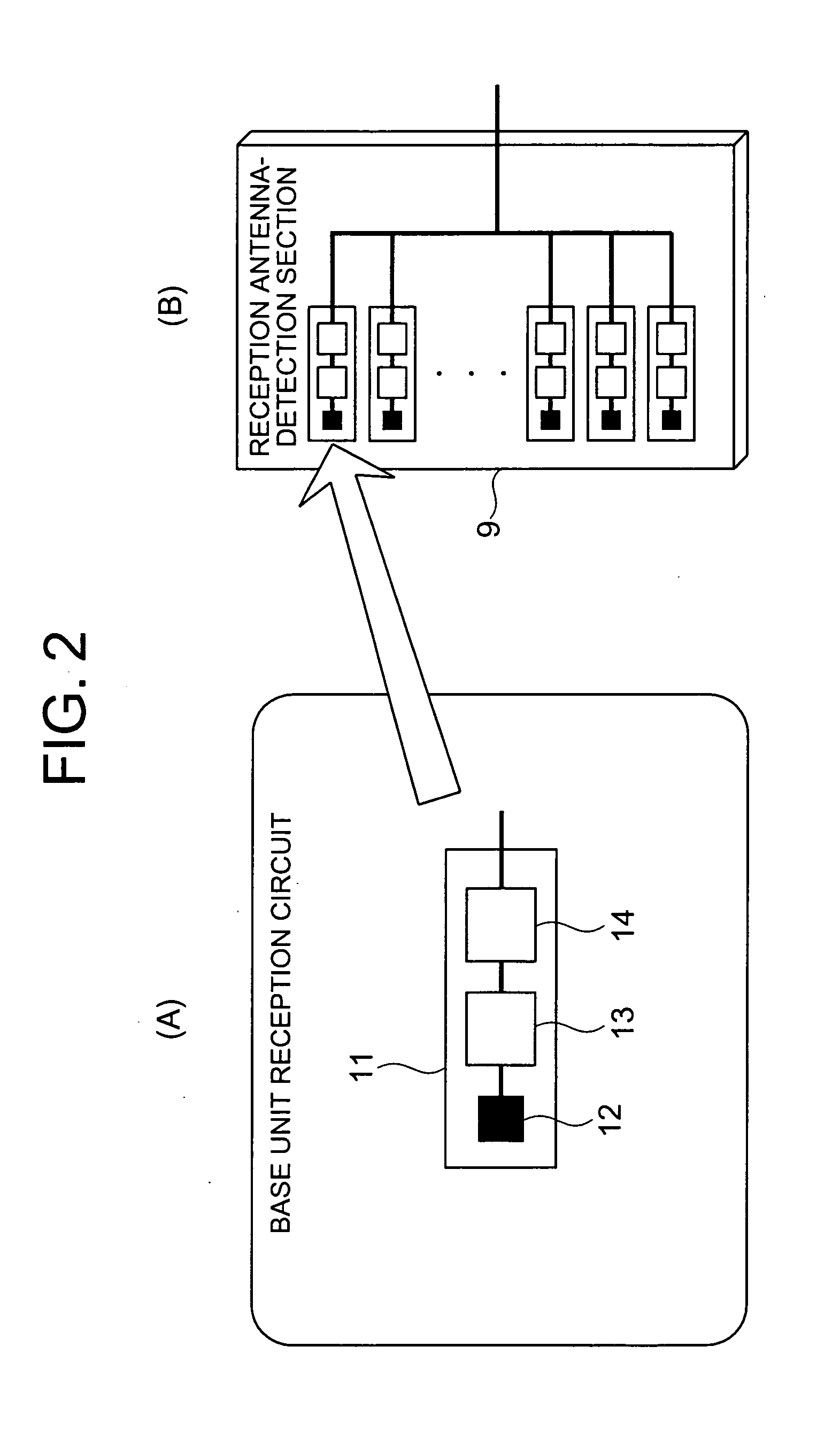Radio communicate method and system
- Summary
- Abstract
- Description
- Claims
- Application Information
AI Technical Summary
Benefits of technology
Problems solved by technology
Method used
Image
Examples
first embodiment
[0013] Sections (A) and (B) of FIG. 1 are diagrams showing an example configuration of a radio system according to a first embodiment of the present invention. A millimeter wave transmitter 1 includes an IF signal generation section 4 for modulating input data and outputting an IF-band modulated signal. The IF-band modulated signal is output to a mixer 3, to which a local oscillation signal is supplied from a local oscillator 2. The mixer 3 obtains a product of the IF-band modulated signal and the local oscillation signal. The thus-obtained output is passed through a band-pass filter 5 so as to remove unnecessary wave components therefrom. Thus, a radio-frequency (RF)-band modulated signal is obtained. Subsequently, a portion of power of the local oscillation signal used for the frequency conversion is added to the RF-band modulated signal. A resultant radio signal is amplified by means of an amplifier 6 and is then transmitted from an antenna 7. By virtue of the above-described tra...
second embodiment
[0015] Sections (A) and (B) of FIG. 3 are diagrams showing an example configuration of a radio system according to a second embodiment of the present invention. A millimeter wave transmitter and a millimeter wave receiver are provided in each of two stations which perform communications therebetween, whereby bi-directional radio communications are enabled. As in the first embodiment, a mixture signal containing a radio-frequency (RF)-band modulated signal and a local oscillation signal is transmitted from the transmitter of the first station. At the second station, the mixture signal is detected by the reception antenna-detection section, which the feature of the present invention, and the output of the reception antenna-detection section is input to an IF signal demodulation section so as to demodulate the reception data. At the same time, a mixture signal from the second station is received by the first station, and the reception data are demodulated.
PUM
 Login to View More
Login to View More Abstract
Description
Claims
Application Information
 Login to View More
Login to View More - R&D
- Intellectual Property
- Life Sciences
- Materials
- Tech Scout
- Unparalleled Data Quality
- Higher Quality Content
- 60% Fewer Hallucinations
Browse by: Latest US Patents, China's latest patents, Technical Efficacy Thesaurus, Application Domain, Technology Topic, Popular Technical Reports.
© 2025 PatSnap. All rights reserved.Legal|Privacy policy|Modern Slavery Act Transparency Statement|Sitemap|About US| Contact US: help@patsnap.com



